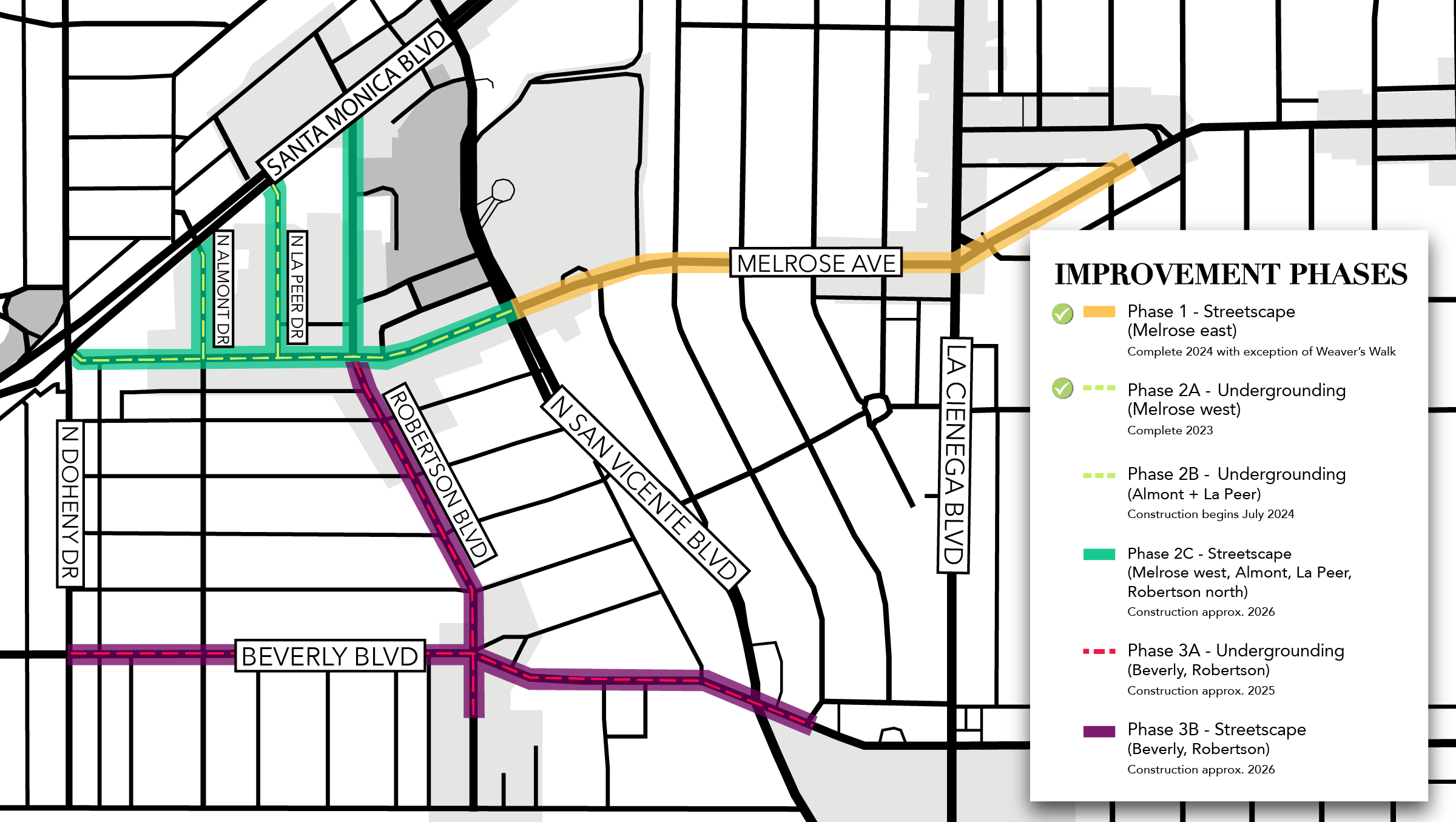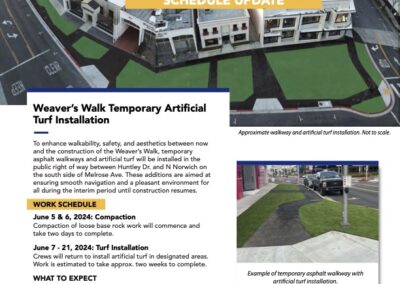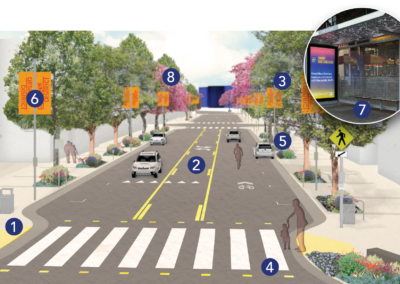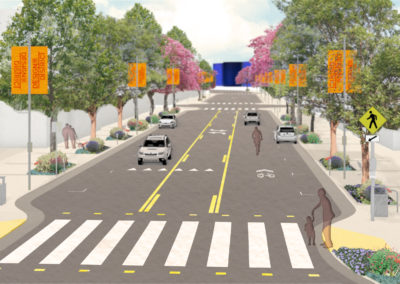WeHo Design District Streetscape Project Features
- Expanded, pedestrian friendly sidewalks
- New paved streets
- New street lighting
- LED energy efficient streetlights
- In Roadway Lighting at crosswalks
- Electric Vehicle charging stations
- Improved bus shelters
- Landscaping and tree planting
- Gathering Space at Norwich
History of the WeHo Design District Streetscape Project
The West Hollywood Design District Streetscape Project was initiated by the City Council in June 2011, when they directed staff to create a Master Plan for the Avenues Streetscape. The West Hollywood Design District Streetscape Master Plan provides a blueprint and design guidelines for the City to implement in phases throughout the Design District.
The Goals of the Master Plan
-
- Strengthen the economic vitality of the District by improving the pedestrian environment
- Add bicycle infrastructure, public gathering spaces, and landscaping.
- Improve the overall aesthetics and utility of the streets.
- Improve traffic safety while encouraging walking and cycling throughout the district.
August 5, 2014: The Avenues Streetscape Master Plan was renamed The West Hollywood Design District Streetscape Master Plan, and was unanimously approved by City Council
December 5, 2014: City Council approved an amendment to the Plan that included concepts for the two new public gathering places and pedestrian paseo network.
March 19, 2018: City Council authorized moving forward with a Working Group made up of City officials, business owners, property owners, and residents to discuss and select streetscape items such as trees, street lights, paving materials and patterns, and plant materials.
November 8, 2018: The first working group meeting was held and there were four additional meetings through 2019 to help discuss and select details for the project. Consultants designing the project provided three options for each design element for the Working Group to select from. The Working Group members voted on each element, and the elements with the most votes were selected.



